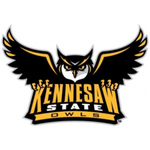Oakland University
Profile
Size
9 / 10Cost
2 / 10Selectivity
1 / 10-
Team Conference
MCLA Div. 1
-
College Type
4-year, Public
-
Campus Type

Suburb: Large
Student Body
Gender
- Male
- Female
Enrollment
- Full Time
- Part Time
Geography
- In-State
- Out-of-state
- Foreign
- Other
Ethnicity
- White
- Black
- Asian
- Latino
- Foreign
- Other
Other includes American Indian, Native Alaskan, Native Hawaiian or other Pacific Islander, two or more races and unknown race / ethnicity.
Team Road Trips
Once a season, the team usually travels to a warmer venue to play multiple teams like University of Miami, Florida Atlantic University, and University of South Florida last year. Two years ago they traveled to South Carolina to take on Coastal Carolina, Wofford College, and The Citadel. They also have nearby road trips near the Great Lakes region to Taylor University, Aquinas College, Western Michigan University, and Central Michigan University.
Recruit Commits
No commits have been submitted for this team.
Location
Team Videos
Where Grads Live
- Greater Detroit Area
- Greater Chicago Area
- Greater Grand Rapids Michigan Area
- Saginaw Michigan Area
- Greater New York City Area
- San Francisco Bay Area
- Greater Los Angeles Area
- Greater Atlanta Area
- Washington D.C. Metro Area
- Phoenix Arizona Area
- Dallas/Fort Worth Area
- Lansing Michigan Area
- Greater Denver Area
- Charlotte North Carolina Area
- Tampa/St. Petersburg Florida Area
Where Grads Work
- Chrysler Group LLC
- General Motors
- Beaumont Health System
- Ford Motor Company
- Hewlett-Packard
- Henry Ford Health System
- Continental
- Kelly Services
- Quicken Loans
- Comerica Bank
- St. John Providence Health System
- Blue Cross Blue Shield of Michigan
- Faurecia
- Oakland County Michigan Government
- US Army
What Grads Do
- Sales
- Education
- Engineering
- Operations
- Information Technology
- Healthcare Services
- Entrepreneurship
- Human Resources
- Support
- Finance
- Media and Communication
- Administrative
- Program and Project Management
- Community and Social Services
- Marketing
Niche Grades
Overall Experience

Student Life

Professor Rating

Academics

Athletics

Campus

Academics
Test Scores
This range represents the middle half of incoming freshman from the 25th to 75th percentile. The writing component is now optional and no longer reported.
This distribution represents incoming freshman test scores and GPA on 4.0 scale.
Admissions
Total |
Male | Female | |
| Applicants | 12,443 | 4,620 | 7,823 |
| % Admitted | 83% | 85% | 82% |
| % Admits That Enroll | 26% | 28% | 24% |
| Incoming Freshman Average GPA | 3.4 |
Admission Considerations
Required | Rec. | |
|---|---|---|
| High School GPA | ||
| High School Rank | ||
| High School Transcript | ||
| College Prep Classes | ||
| Recommendations | ||
| Demonstrate Competencies | ||
| Admission Test Scores | ||
| Other Tests (Wonderlic, etc.) | ||
| TOEFL (English proficiency) |
Majors / Programs
Degrees offered by popularity. Type = Bachelor.
Financial
Net Price
Average net price = sticker price - financial aid.
$12,843
Average net price by income for incoming freshman receiving financial aid.
Net price for students paying in-state tuition rate (public institutions).
Sticker Price
Sticker price = estimated total cost of attendance.
In-state | Out-of-state | |
On Campus | ||
| Tuition & Fees | $13,346 | $24,540 |
| Books & Supplies | $784 | $784 |
| Cost of Living | $10,806 | $10,806 |
| Personal Expenses | $2,434 | $2,434 |
| Sticker Price | $27,370 | $36,958 |
Personal expenses includes laundry, transportation, entertainment and furnishings.
Financial Aid
94% of full-time, incoming freshman receive financial aid.
Receiving Aid % | Avg. Aid Amount | |
Type of Aid | ||
| Grant or Scholarship | 89% | $10,154 |
| Federal Grants | 35% | $4,813 |
| Pell Grants | 35% | $4,689 |
| Other Federal | 2% | $1,923 |
| State & Local Grants | 6% | $1,085 |
| Institutional Grants | 88% | $8,291 |
| Student Loans | 50% | $5,806 |
| Federal Loans | 49% | $5,090 |
| Other Loans | 4% | $10,330 |
All financials shown for full-time, incoming freshman.
Total Amount | Per Student | |
Endowment | ||
| Financial Assets | $102 Million | $5,269 |
Value of endowment assets at fiscal year end.
Debt
Total federal debt after graduation for undergrad borrowers: $25,000.
Total cumulative student debt by percentile.
Total Principal | Monthly Payment | |
| 10 Year Repayment | $17,750 | $266 |
Most student loans have a grace period before repayment begins.
3 Year Avg. Default Rate: 4.8%
Avg. rate for colleges with lacrosse is 5.1%.
Total federal debt excludes private student loans and parent PLUS loans. Cumulative debt cohort includes 8,103 students.
Salary
Earnings 10 years after enrollment: $43,100
Earnings of former students working by percentile.
Earnings of former students who received federal financial aid. Figures shown are median.
Payback
How long until this college investment pays off: 5.23 years.
Median debt and foregone earnings divided by median earnings. Foregone earnings assumes 4 years to graduation; at this school, 30% of students graduate on time.
Team Social
Campus Safety
On Campus |
In Res. Halls |
|
|---|---|---|
Criminal Offenses |
||
| Murder | - | - |
| Negligent Manslaughter | - | - |
| Rape | 4 | 4 |
| Fondling | 2 | 2 |
| Incest | - | - |
| Statutory Rape | - | - |
| Robbery | - | - |
| Aggravated Assault | 2 | 2 |
| Burglary | 8 | 8 |
| Motor Vehicle Theft | - | - |
| Arson | 1 | 1 |
In Residence Halls are a subset of On Campus statistics. Murder includes non-negligent manslaughter.
The crime data reported by the institutions have not been subjected to independent verification by the U.S. Department of Education. Therefore, the Department cannot vouch for the accuracy of the data reported here. Statistics represent 3-year average data.
Data from The National Center for Education Statistics (NCES), the primary federal entity for collecting and analyzing data related to education.
Carnegie Classifications
Category |
Classification |
|---|---|
| Basic Classification | Doctoral Universities: Moderate Research Activity |
| Undergrad Instruction | Professions plus arts & sciences, some graduate coexistence |
| Graduate Instruction | Research Doctoral: STEM-dominant |
| Enrollment Profile | High undergraduate |
| Undergrad Profile | Four-year, full-time, selective, higher transfer-in |
| Size and Setting | Four-year, large, primarily nonresidential |
Carnegie classifications provide a framework for evaluating comparable schools.
Similar Academic Schools
-

-

-

-

-

-

-

-

-

-

-

-

-

 See more college grades
See more college grades Free ACT and SAT test prep
Free ACT and SAT test prep Free SAT test prep
Free SAT test prep Net price calculator
Net price calculator Free scholarship search
Free scholarship search